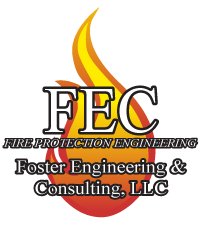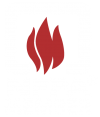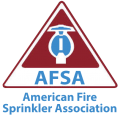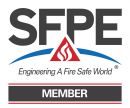Authorities Having Jurisdiction (AHJ) have a tough, often thankless, and occasionally begrudged job—to uphold public safety and sometimes that means asking the hard questions or saying no. The challenges that accompany this important position are numerous—something our founder and Principal Engineer Ralph, who spent nearly 20 years as an AHJ, knows all too well. Often, local municipalities have more plan reviews coming across their desk than they can keep up with and their review backlog may be weeks long. While AHJs often have years of experience navigating fire and building codes, IFC, Section 104.7.2 and NFPA 1, Section 1.15 grant them the authority to request a third-party review by a registered design professional.
Fire protection engineers apply their experience, education, and thorough knowledge of fire codes/standards to ensure designs meet specified requirements. Recently, a fire sprinkler contractor approached Foster Engineering to review a sprinkler design and commodity classification at the request of the Fire Marshal.
Fire sprinkler designs center around several factors, one of which is the commodity being stored in the space. In this case, the commodity was primarily metal equipment inside wooden crates. At first glance, this seems to perfectly fit the NFPA 13 definition of a Class II commodity—a noncombustible product inside wooden crates. Upon closer examination, the Owner’s Information Certificate indicated that the equipment also had rubber and plastic components. As many in the industry know, when a fire protection engineer hears “plastic” and “storage” our eyes light up and we want to know exactly how much of it is being stored. Plastics burn more aggressively than other materials and produce large quantities of harmful biproducts in the process. Inadequate protection can mean that the fire grows beyond the system’s capabilities which can result in catastrophic losses.

Since requirements vary depending on the commodity classification, it’s imperative that commodities are properly classified. According to NFPA 13 (2019 Ed.), commodities containing small amounts of plastic—less than 5 percent by weight or volume for expanded plastics—can be classified as Class III. Nuanced considerations like these are why it is important for contractors and representatives to be active participants when an owner fills out the owner’s information certificate. Without verifying the information first-hand, engineers must take the owner’s statement at face value and state relevant assumptions in our analysis.
In this case, after deciding that a Class III commodity classification was appropriate, the next task was determining the appropriate sprinkler protection criteria necessary for the hazard. The 2019 Edition of the NPFA 13 Handbook has an excellent flowchart for determining protection criteria for Class I-IV commodities (Exhibit 20.2). For this particular commodity and storage configuration, we had three options: Control Mode Density/Area (CMDA), Control Mode Specific Application (CMSA), or Early Suppression Fast Response (ESFR). Since the sprinkler contractor selected CMDA, we validated that their design was adequate to meet the protection criteria required for storing this commodity. After verifying the design area and density was appropriate, Foster Engineering provided a letter detailing our analysis and validating the contractor’s design to be presented to the AHJ. Ultimately, the Fire Marshal was satisfied that a licensed fire protection engineer validated the design, and our client was permitted to move forward with the project.
Reviews from a fire protection engineering firm ensure the technical accuracy of the plans prior to submittal to local AHJs and eventual permitting. Beyond ensuring compliance with the requirements of NFPA 13, fire protection engineers take a wholistic approach by evaluating potential hazards in the space and making recommendations based on their intimate knowledge of fire dynamics. If you ever need advice or a second opinion, consider reaching out to Foster Engineering or a local fire protection firm to assist in your fire protection needs.




